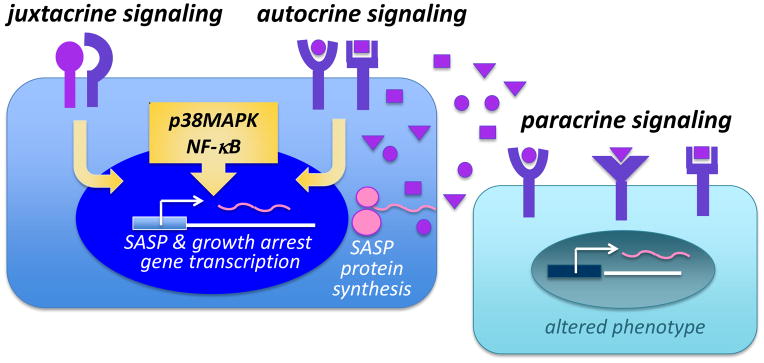Figure 2.
Signaling mechanisms used by senescent cells. An early event in the senescence response is an increase in the expression of IL-1α, a cytokine that is rarely secreted but rather is membrane-associated where it binds its juxtaposed receptor (juxtacrine signaling). IL-1αreceptor engagement triggers a signaling cascade that ultimately activates the NF-kB transcription factor that transcribes the genes for many of the pro-inflammatory components of the SASP. The senescence response also activates pathways, such as the p38MAPK pathway, which ultimately stimulates the transcription of genes that enforce the senescence growth arrest. SASP components also include secreted factors such as IL-6 and IL-8, which can reinforce the senescence growth arrest by autocrine signaling. Finally, SASP components can markedly affect the behavior of neighboring cells by paracrine signaling.

